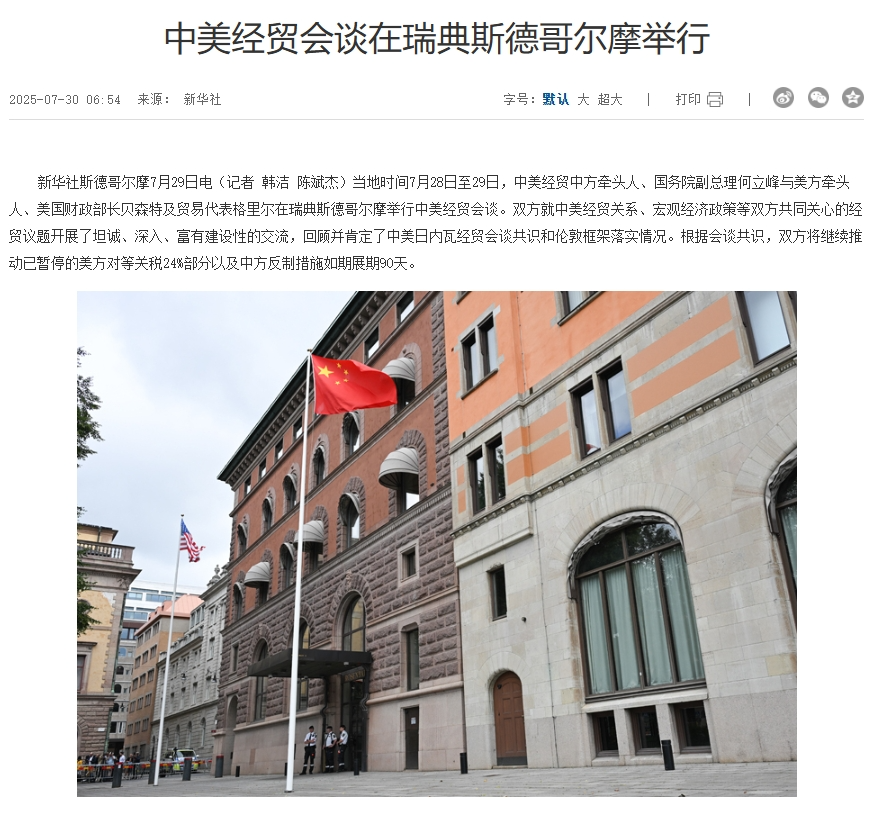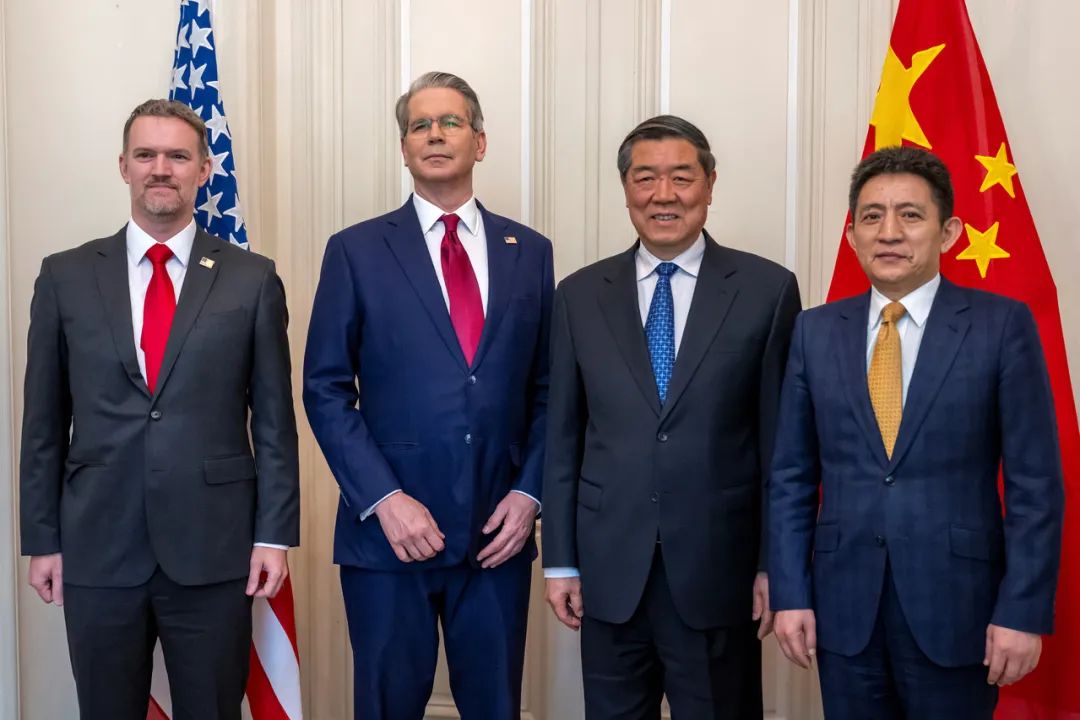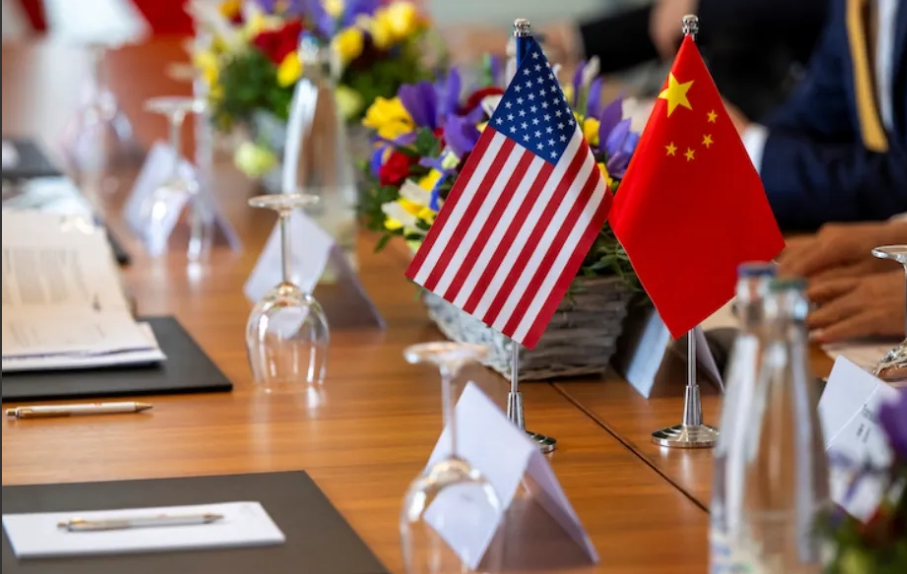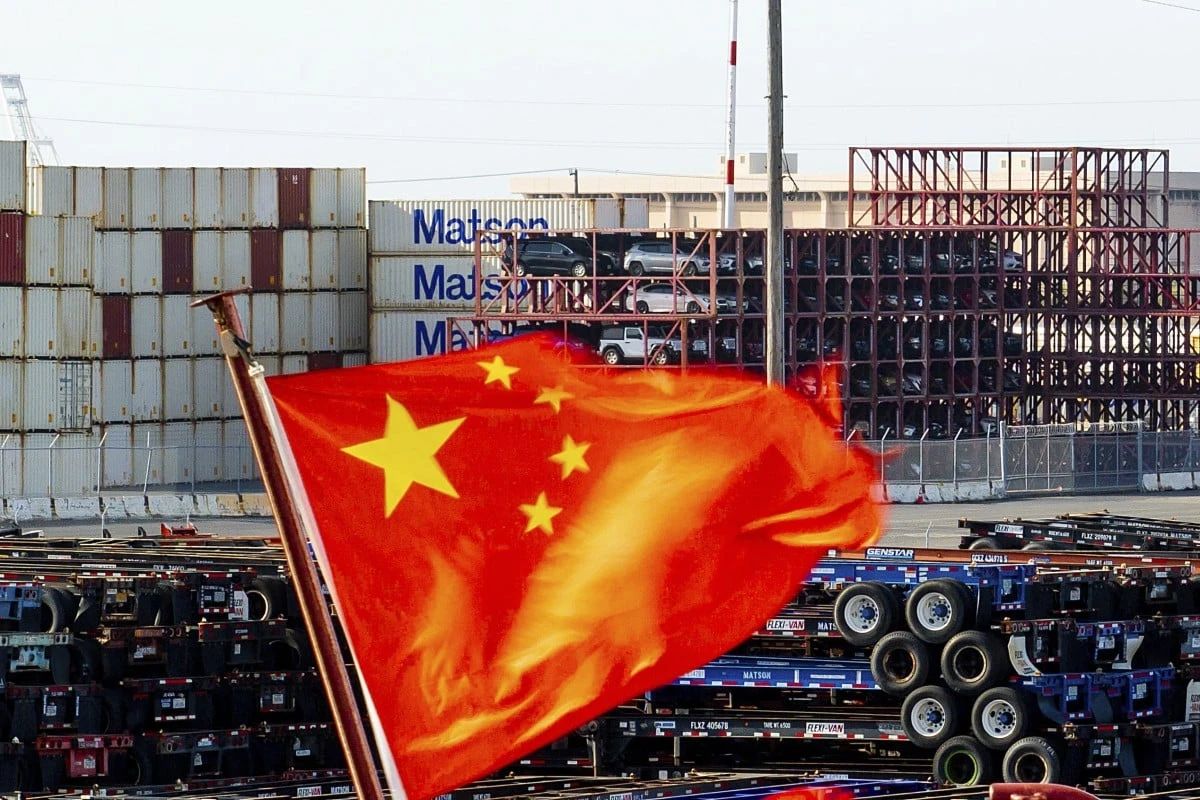All categories >
Major Development! US and China Extend Tariff Truce by 90 Days!
Categories:
News Center
News
Time of issue:
2025-08-01 16:49
Views:
In today's globally interconnected economy, the economic and trade relationship between China and the United States has always been closely watched. At the Sino-US trade talks held in Stockholm, Sweden from July 28th to 29th, 2025, both sides agreed to extend the suspended 24% US "reciprocal tariffs" and China's countermeasures by 90 days.

Tariff truce extended again, a hard-won "breathing space"
This measure continues the interim consensus reached at the Geneva talks in May 2025, namely, both sides retain the basic 10% tariff and suspend the additional 24% tariff.
Both sides agreed to extend the suspended 24% US "reciprocal tariffs" and China's countermeasures to November 11, 2025.
The 10% basic tariffs imposed by China and the US cover approximately US$380 billion in trade, involving 1,120 categories of goods such as bicycles, semiconductors, and new energy products. This tariff level will continue to be implemented.
The 24% tariff originally planned by the US (total tariff rate of 34% after stacking) has been shelved again.
The US still retains a 20% "fentanyl tax" on fentanyl-related substances, but China has not imposed a reciprocal tax.

The 90-day extension of the tariff truce, is essentially a tactical truce between China and the US under the framework of "competitive coexistence," providing both sides with strategic buffer space. It avoided an immediate escalation of the tariff war and also met the global market's strong expectation for stability.
Although the 90-day extension of the tariff truce has brought temporary stability, the path to future negotiations remains challenging. In the next 90 days, both sides will need to continue in-depth discussions on many key issues such as tariffs, market access, and technological cooperation.

China has made it clear that negotiations must adhere to the principles of mutual respect and fairness and justice, and resolutely oppose the politicization of economic and trade issues. In terms of technological cooperation, China hopes that the US will relax export restrictions on high-tech products. The US, however, hopes to use negotiations to prompt China to make certain concessions on the export of key mineral resources such as rare earths.
In addition, both sides need to negotiate on further reductions in basic tariffs, how to reach a tariff adjustment plan acceptable to both sides while safeguarding their own interests is a difficult problem facing both sides.
At the same time, we should also see that this 90-day buffer period has also brought many opportunities. The technical teams of both sides are verifying a new negative list, it is said that the US has removed photovoltaic components and some medical devices from the tax list, and China has put the Boeing aircraft purchase case back on the table.

These measures have provided possibilities for further cooperation between the two sides in the economic and trade field. For enterprises, this is a good time to adjust their business strategies and expand their markets. Foreign trade enterprises can take advantage of the window period to lock in Christmas season orders, reasonably plan production and transportation, and reduce costs; at the same time, they can also actively seek new cooperation opportunities, explore new markets, and enhance their competitiveness.
We hope that in the next 90 days, through equal and frank dialogue, both sides will reach more consensus , laying a solid foundation for the long-term stable development of Sino-US economic and trade relations, and contributing to the prosperity of the global economy.
Keywords:
Sino-US trade,Tariff truce,Equivalent tariffs










